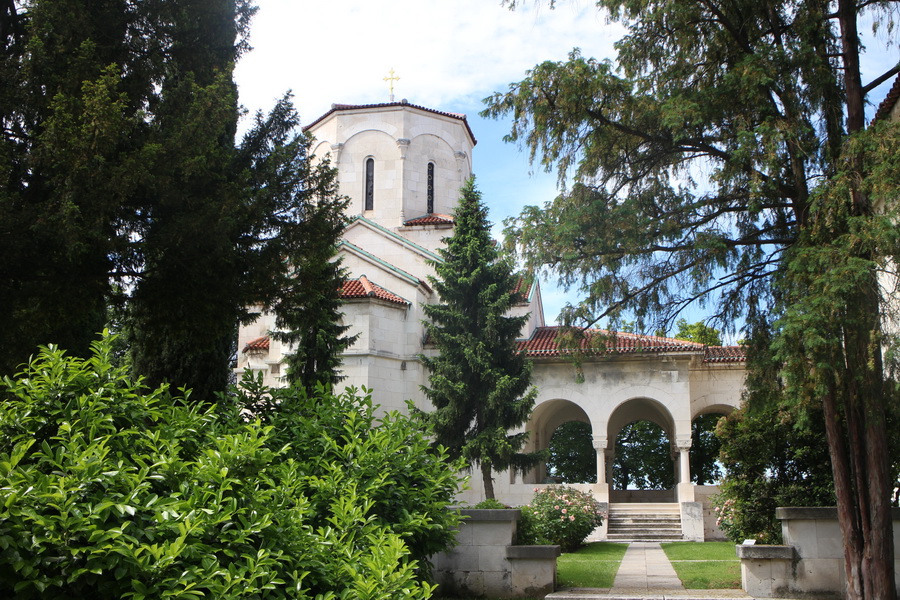
The Royal compound is a complex of residences built for the Kara?or?evi? royal family between 1924 and 1937. The compound is located in the Dedinje neighborhood, a prestigious area of Belgrade, Serbia. It consists of two primary residences: The Royal Palace and The White Palace. The royal compound covers an area of 134 hectares, of which 27 hectares surround the Royal Palace and another 12 hectares the White Palace. The service buildings include kitchens, garages, guards barracks and the office of the Marshal.
The Royal compound is covered with parks of the English garden type, where the vegetation is allowed to grow naturally, whereas around the two palaces the French garden concept of park arrangement is applied, meaning that flowers, bushes and trees have neatly shaped forms and are planted in strictly geometrical order.
The Royal Palace is a grand stucco villa in the Serbo-Byzantine style by architect Živojin Nikoli? and assisted by Russian immigrant architects Nikolai Krasnov and Victor Lukomsky, was built from 1924 to 1929 as an ideal home for King Alexander I and Queen Maria. The King thought that it would be a nice and quiet place, away from the city noise and curious public eyes.
The White Palace located in the same complex as the Royal Palace, the official residence of the Kara?or?evi? royal family. The palace was designed in a NeoPalladian manner inspired by the 18th century English houses such as Ditchley Park. Its interior was decorated with English Georgian and 19th century Russian antiques by the French design firm Jansen, which later decorated the White House during the administration of John F. Kennedy.
The Royal Chapel, which is located within the Royal Compound, is devoted to Saint Apostle Andrew The First-Called, the patron Saint of The Royal Family of Yugoslavia. The church was built at the same time as The Royal Palace and is attached to it through a colonnade with semicircular arches from where there are magnificent views towards northern, western and southern parts of Belgrade, as well as to the terraced rose gardens. It is covered with frescoes painted by Russian painters who traveled around Serbia and copied the frescoes of the most famous Serbian medieval monasteries.

